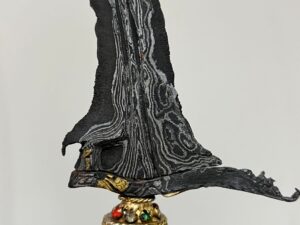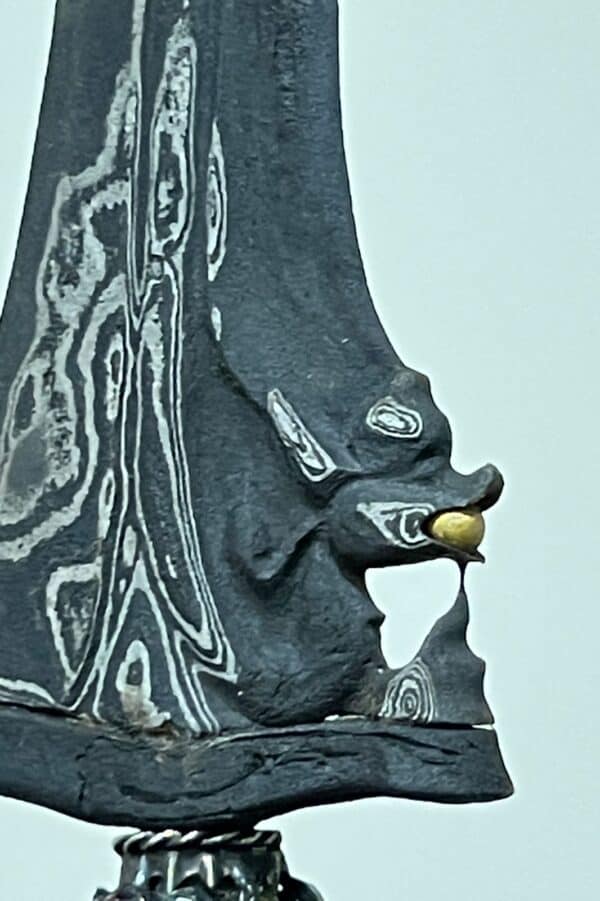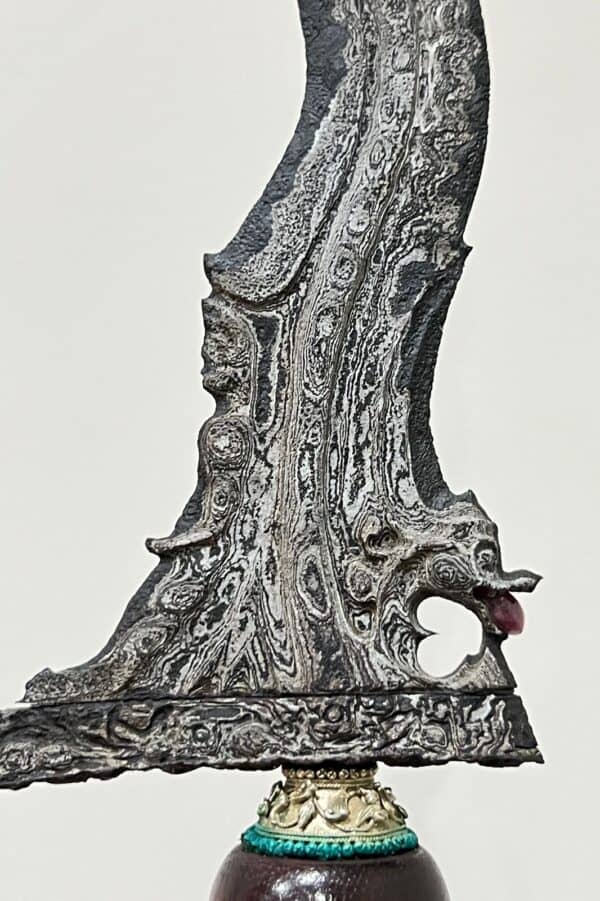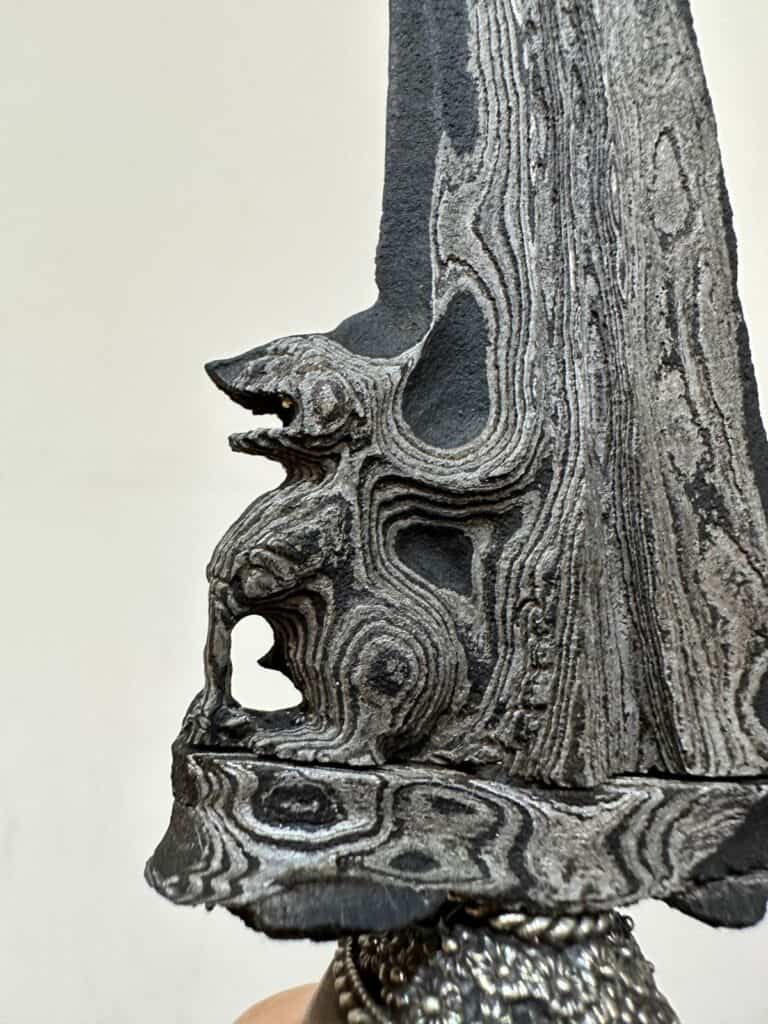The Magical Myths and Legends of Keris

![]()
Most blades are made with only one thing in mind: the ability to perform well in combat. Although some Keris were specifically made for use by warriors, the origins of this special Indonesian blade is far more complex.
Every Keris is said to house its own spirit, containing an energy which speaks directly to the owner. Not all Keris are compatible with every person; some blades bring bad luck to one person but bestow good fortune on another.
The mystical qualities of the Keris and its unique uses throughout history means that there are many myths and legends which have been passed down from one generation to the next. Here’s a collection of some examples of the famous magical powers of the Keris.
The Nature of the Keris
The spirit which is contained within the Keris is integral to its power but not every blade is destined for goodness. Legend says that some Keris are home to malicious spirits who are intent on doing harm no matter who picks them up.
Some blades will bring bad luck if they are wielded by an incompatible person. Like all magical artefacts, there must be a balance between the Keris and its master. If a Keris brings bad luck to one person, it may still bring good fortune to another if they are the right fit.
Sleeping with the blade under your pillow is one traditional method; if you have good dreams, the Keris will bring you good luck. If you have bad dreams, the old lore decrees that you are not compatible with the Keris and holding onto it will only bring you bad luck.
Many men had their Keris made for them specifically to receive the benefits they sought such as wealth, health or luck. The length of the blade was supposed to be made to equal the distance between the man’s nipples; anything else was said to bring bad luck.
The Magical Keris Power
There have been many stories told about the magical abilities of the Keris and what each individual blade is capable of.
Keris which have been hung from the beams of a home for protection are said to fly at enemies who step over the threshold, protecting their master from harm. When worn the Keris is equally dynamic, rattling its sheath when it detects danger drawing close.
Warriors always carried at least one Keris because of their fearsome abilities to inflict harm and death on others, even from a distance. Legend says that driving a Keris into the footprints of an enemy is all it takes to kill them, but pointing the weapon in their direction works well too.
Folklore says that Keris can fly through the air on their own, either to do harm or to guard their master. When the true name of the Keris is spoken by its master, it can also balance on the tip of its blade until summoned.
Additional Powers of the Keris
As well as being a weapon for combat, Keris can also consume fire, protecting against flames and/or reducing the intensity in a move known as “fire eating” or “mayan api”. A famous story tells how a village of 300 wooden houses was decimated by raging fire, but one single house containing the Keris was left unscorched. The owner later sold the Keris as he needed money, and less than two months later, his house had burned to the ground.
One well-known legend tells how fire from a burning ship was moved to land, simply by pointing the Keris at the vessel. A flick of the blade towards land removed the flames from the ship, saving all on board.
Conversely, the Keris can also command water. It’s possible to squeeze the equivalent of a glass of water using a Keris but legend says that doing this destroys its other abilities.
The Legend of the Keris and Mpu Gandring
There are many myths and legends about the Keris, with tales about the incredible magical abilities displayed by this ancient style of blade. However, one of the most famous legends of all time is the Keris and Mpu Gandring, a tragic tale which highlights just why each blade must be treated with reverence and care.
The Tale
The story takes place in the 11th century with Ken Arok, the child of Hindu god Brahma taking centre stage. After a hedonistic life, he is tamed by Hindu priest Lohgawe who persuades him to stop robbing and gambling and lead a decent life. Lohgawe helps Ken Arok to get a position working for one of the most powerful local leaders, Tunggul Ametung as a bodyguard.
Unfortunately, Ken Arok falls in love with Tunggul’s wife, Ken Dedes, and believes that she has been chosen to give birth to a line of kings. He also believes that by taking her as his wife he too will become a king.
Ken Arok resolves to have Ken Dedes by whatever means he must, and approaches Mpu Gandring, a famous Keris maker. He asks Mpu Gandring to make him a Keris which is particularly strong and powerful. Mpu Gandring agrees but cautions it will take a year to do. Five months later Ken Arok visits Mpu Gandring to check on progress and sees what he thinks is a completed Keris. However, Mpu Gandring warns him that although it may look finished, there is much work yet to be done to carry out the necessary rituals that would prevent the Keris from becoming a force of evil.
Mpu Gandring’s words fall on deaf ears as Ken Arok wants to kill Tunggul Ametung before his wife gives birth to an heir. Ken Arok grabs the Keris and stabs Mpu Gandring, mortally wounding the man. In his dying breath Mpu Gandring places a curse on the Keris. There have been various interpretations of the curse; some say the blade was cursed to kill seven people, others say the curse was destined to kill seven generations of Ken Arok’s heirs. But both versions agree, the Keris was cursed to kill Ken Arok.
Ken Arok’s plan was sly; he gave the Keris to another bodyguard Kebo Ijo who was so proud of it that he showed the blade to everyone he met. Once the ownership of the Keris was well-known, Ken Arok stole it back from Kebo Ijo and used it to stab Tunggul Ametung to death while he was sleeping.
In the morning, Tunggul Ametung’s body was found with Kebo Ijo’s famous Keris by his side, and the innocent bodyguard was blamed for the death. Ken Arok leapt into action, slaying Kebo Ijo with the Keris in an apparent act of revenge.
It seemed as if Ken Arok’s plan had worked as he claimed Ken Dedes as his wife and took over as ruler. Ken Dedes had already born a son to the deceased Tunggul Ametung, Anusapati. No one told Anusapati that he was not Ken Arok’s real son but he got suspicious and learned the truth about not only his parentage but who really killed his father. In a rage, Anusapati grabbed the cursed Keris and ordered his assistant to kill Ken Arok, which he did.
To ensure nothing was said about his role, Anusapati used the Keris to kill his assistant who had carried out the murder. However, it wasn’t enough as Tohjaya (Ken Arok’s son from his first marriage) discovered Anusapati’s murderous secret. He took the Keris from Anusapati at a cockfight, and killed him with the blade.
Tohjaya then took over the ruling of the region but made unwise decisions, leading to a revolt which ultimately cost him his life. Tohjaya was stabbed, with the Keris.
Mpu Gandring, Ken Arok, Tunggul Emetung, Kebo Ijo, Anusapati, Anusapati’s assistant and Tohjaya: the seven deaths foretold in the curse of the Keris.
It’s not clear what happened to the Keris after this, but legend says it was thrown into the Java Sea where it transformed into a dragon.









